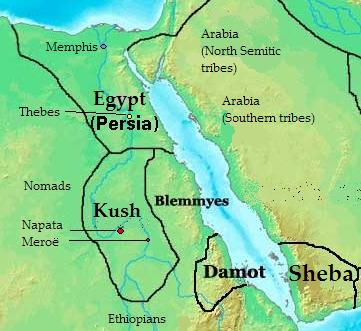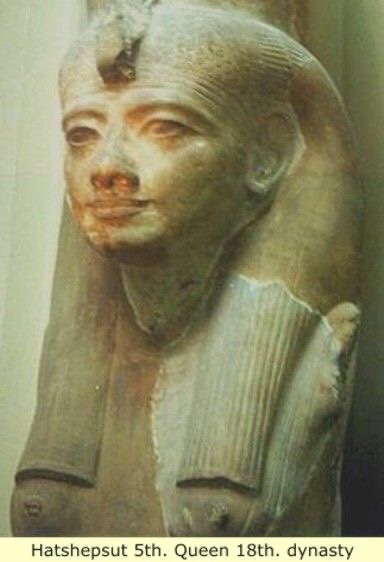(Please note that this is merely an introductory post and we wont go deep into the topic. It is basically meant to familiarize you with the topic before we go deeper)
For my first post I would like to discuss the first two ancient African civilizations; Kush and Kemet. These names may not be acquainted with you because they now go by different names; Kush is the modern-day Sudan and Kemet is the modern-day Egypt. Majority of people associate Kemet with the large pyramids and the biblical account of Moses and Pharaoh. Most people even go ahead to assume that Kemet (Egypt) is the only place with pyramids, I’m sorry to break it to you folks but Kush (Sudan) has more pyramids than any other place in the world…and that’s on what? Facts.

Kush and Kemet were neighboring civilizations although there is a lot of controversy when it comes to the association and origin of these two cities. One account states that Kemet and Kush had a rivalrous relationship although Kemet developed socio-economically first and became the most powerful civilization by invading and conquering Kush. The Kushites were used as slaves in Kemet to build the pyramids, farm etc. After many years Kush attained their independence from Kemet. It also states that Kemet’s population was made of Arabs and Kush was made up of Nubians. According to archeological evidence it reveals that Kemet was a land of blacks (Nubians) and that Kushites were the first inhabitants. This goes ahead to show how whitewashed our history is; to some extent the narrative pushes the notion that blacks were and are inferior.
I think the funniest part of all this has to be the fact that some of the current Egyptians deny being black. We have seen it on social media. We could see it during the 2018 World Cup and 2019 Cup of African Nations. It’s so funny yet sad. Some even go ahead and deny being African. They claim to be European. Unfortunately or fortunately, Europeans do not claim them. So, where do they belong?

Diop, a historian and author, used the bible and ancient hieroglyphs to show they were black in his writing. He wrote a book called The African Origin of Civilizations. Quite a number of us went to Sunday school right? I hope you paid attention. I hope you remember the story of Ham, Noah’s son who was cursed for seeing the nakedness of his father. One of the curses of Ham is believed to have been darkened skin. The Egyptians used km in their hieroglyphs. Km meant “black”. Diop believed that the km translated to Cam or Ham in Hebrew. Ancient Egyptians referred to themselves as kmt which scholars opposing Diop believed to have meant “black land” in reference to the black soil of the Nile Valley.
Count Constatine de Volney, in his book The Ruins, which talks about his travel to Egypt in 1787, wrote that:
“All the Egyptians have a bloated face, puffed up eyes, flat nose, thick lips- in a word, the true face of a Mullato. I was tempted to attribute it to the climate but when I visited the Sphinx, its appearance gave me the key to the riddle. On seeing the head, typically Negro in all its features…”
“In other words, the ancient Egyptians were true Negroes of the same type as all native Africans. That being so, we can see how their blood mixed for several centuries with that of Greeks and Romans, must have lost the intensity of its original color while retaining nonetheless the imprint of its original mold”

Constatine’s texts reject the whitewashed account of ancient Egyptians not being black. Below is a picture of the statue of Pharaoh Khafre. It is believed that his face is on the Sphinx. Examine his facial features and compare them with Constatine’s text.

The white washed account tries to use the color of the current Egyptians to oppose Egyptians being black. At some point in history, Kemet was conquered by foreign powers. The nations were Assyrians, Persians, Greeks and Romans. The interactions between those nations and the Egyptians resulted to intermarriages hence a change in complexion and bodily features.
Furthermore, the same account only talks about the rulers after Kemet was conquered by foreign powers, for instance, Queen Cleopatra who is depicted with a light complexion. It pushes the narrative that ancient Kemites were not black. Queen Cleopatra was in the lineage of Ptolemy. Ptolemy was one of Alexandra the Great’s generals. Alexander’s colonies were distributed amongst his generals after his death. Therefore, Cleopatra was not native African but Greek. It doesn’t talk about queens like Queen Hatshepsut who was the second queen of united Kemet and was black.


At some point in history, as we will learn later, Kush took over Kemet from the Assyrians. This was a move to restore the previous order. Kushite rulers ruled Kemet and are often referred to as black pharaohs of the 25th dynasty. I always feel like the term tries to bring out the narrative that blacks are not native to Kemet. Below is a statue of Mentuhotep II, a pharaoh before the 19th dynasty, examine his features and compare with Constatine’s description.

Even ancient historians like Herodotus say that Egypt was a land of black people. What more evidence do you want? Herodotus loved travelling. He always wrote down his experiences. He literally wrote down what he saw and heard and did not rely on hearsay. He visited Egypt in 490 BC during the Persian invasion. Herodotus in his book second book of history called Euterpe, states that:
…the third evidence is afforded by the people saying there, who are of a black color by reason of heat.
Another version of the same account is the allegation that ancient Egyptian were aliens be. Yes, aliens! This is because of the elongated skulls. What people do not realize is quite a number of ancient African communities had that. Cranial deformation was part of the culture of some communities. It was done when one was still a baby because the skull was soft and easily moulded. Look at the Mangbetu people of Congo. They did that.


The same version which talks about aliens states that ancient Egyptians did not have the knowledge to build the pyramids and only aliens could do that. It is undermining, yes? Actually, ancient Egyptians had a vast knowledge is geography, architecture, mathematics etc. They had universities which even admitted scholars from Europe.
Just think, that this race of black men, today our slaves and subject of our scorn, is the very race to which we owe our arts, sciences and even speech
Count Constatine de Volney in his book, The Ruins.
The other account, which I believe is right, states that Kush developed about 200 years before Kemet. It was even said to be more developed than Kemet. Kemet developed as a meeting point of people from the south and west . Its power is linked to the fact that it was multicultural due to the migration. It had a high population. Due to that, a powerful civilization was created.
Furthermore, contrary to the former account, the two civilizations had an amicable relationship. This is because they were made of the same people. Consequently, their social, political and economic structures were the same. Aside from that, the two civilizations engaged in trade with each other. Further proof of their amicability can be seen when Kush goes ahead and saves Kemet from the Assyrians who had conquered it. This was to restore previous order and structure in Kemet. Would an enemy civilization take control of the other just to restore previous order?
I guess that will serve as the introduction to Kemet and Kush. My next post will examine the intricacies of the two civilizations.
MAKE AFRICA GREAT AGAIN
❤️❤️❤️❤️❤️✨✨✨✨✨
LikeLiked by 1 person
Thank you so much
LikeLike
This is like a wake up call and i love how you put across everything. Can’t wait for your next article. 💫
LikeLiked by 1 person
Thank you so much
LikeLike
Very educative and a nice read.Good work.
LikeLiked by 1 person
Thank you dad
LikeLike
great stuff bro, all the best in this blog life, with you all the way💯
LikeLiked by 1 person
Thank you so much bro
LikeLike
✨✨
LikeLiked by 1 person
👏🏾
LikeLiked by 1 person
You’re doing some great research Prof. Keep educating us and help debunk the western narrative on our history. I stan!
LikeLiked by 1 person
Thank you prof
LikeLike
Wow this was so insightful King! Honestly craving for more.
Amazing research was done and the mode or style of writing keeps me glued. Keep it up.
LikeLiked by 1 person
Thank you so much
LikeLike
Your blog is just WOW! Amazing content!!!!
LikeLiked by 1 person
Thank you so much
LikeLike
Beautiful!
LikeLiked by 1 person
Thank you so much
LikeLike
Keep it up!!
LikeLiked by 1 person
Thank you bro
LikeLike
Top stuff bro…keep up
LikeLiked by 1 person
Thank you bro
LikeLike
Africa must wake up. For what tomorrow brings has been practiced in the past. Keep on educating us brother.
LikeLiked by 2 people
Yes Africa must wake up. Thank you
LikeLike
Waw!This is so simple and educative. I like thins
LikeLiked by 1 person
Thank you
LikeLike
Factual and insightful. Nice work bro, keep up
LikeLiked by 1 person
Thank you bro
LikeLike
Make Africa Great Again✊🏽💯💯
LikeLiked by 2 people
Yes my brother
LikeLike
Incredible stuff bro
LikeLike
Kazi safi bro
LikeLiked by 1 person
Thank you bro
LikeLike
Good stuff ❤️❤️⚡️. Loved it
LikeLike
It’s time for Afrikans to take back our history. It is time for us to take back what was taken from us
LikeLike
Wow
LikeLike
I love this Kingsley !!!
Amazing work♥️
LikeLiked by 1 person
Thank you so much
LikeLike
Mad content my guy!
Keep it up
LikeLiked by 1 person
Thank you bro
LikeLike
Good job bro. Most history about Africa and more so Kenya is basically a lie
LikeLiked by 1 person
True. It’s our job to find the truth. Thank you bro
LikeLike
Wonderful
I loved it
I’ve been meaning to look for sth good to read and you just saved me
We need more 😂
Superb work men
LikeLike
Thank you so much. More to come soon enough 😂
LikeLike
Very eye opening! Looking forward to the next!
LikeLiked by 1 person
Thank you so much
LikeLike
I am a Kalenjin from Kenya, a tribe of the Highland Nilotes. Our myths say we migrated down the Nile from Sudan. Here’s what I recently noticed. Kalenjin word for country is ’emet’. Kalenjin word for night/dark is ‘kemoo’. I can see the connection with Kemet. Even the name of the gods Amun-Ra have meanings in Kalenjin dialects.
Get to me for further discussion.
LikeLike
Wow. That’s very interesting. I have written down my email in the other comment. Here it is again kingsley.kp6@gmail.com
LikeLike
I am a Kalenjin (highland Nilote tribe) from Kenya and I recently found out about Kemet. In our language the word for country or land territory is “emet”. The world for night is “kemoo”. Linguistically I can see the Kalenjin connection to Egypt.
Get to me for further correspondence on email.
LikeLiked by 1 person
Hey. Nilotes are nubians therefore they do have a connection to Ancient Egypt. That’s really interesting. Could you contact me. My email is kingsley.kp6@gmail.com
LikeLike
A worthy read indeed.
LikeLiked by 1 person
Thank you so much
LikeLike
Very informative and eye opening ‼️
Keep it up 💪
LikeLiked by 1 person
Thank you so much
LikeLike
Loved the article. Look forward to reading more
LikeLike
Wow, so informative and thought provoking.
LikeLike
Thank you so much
LikeLike